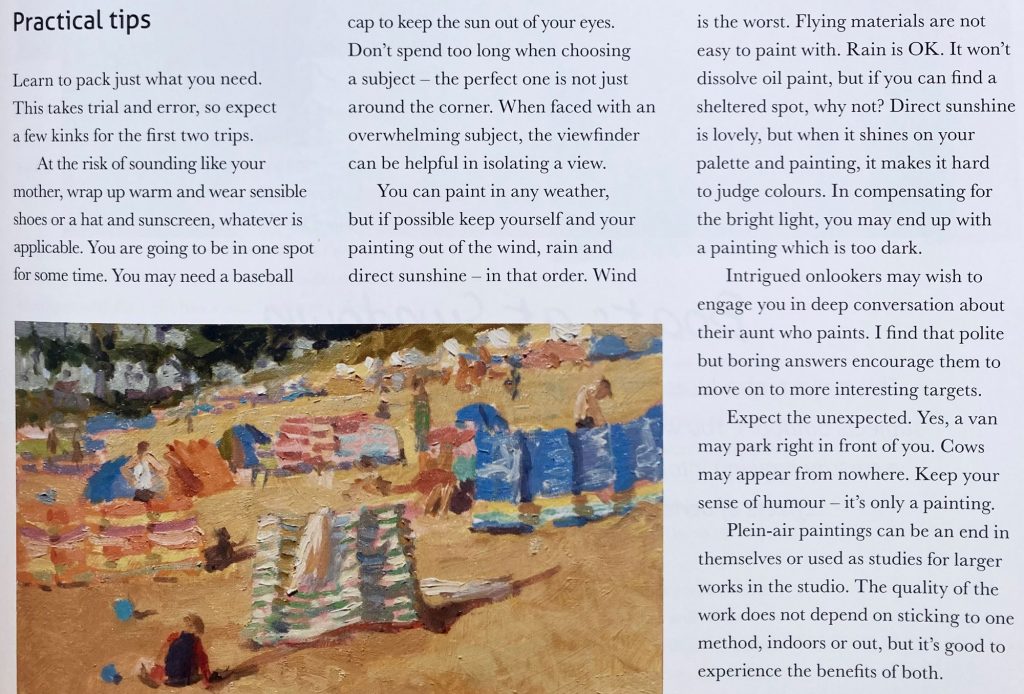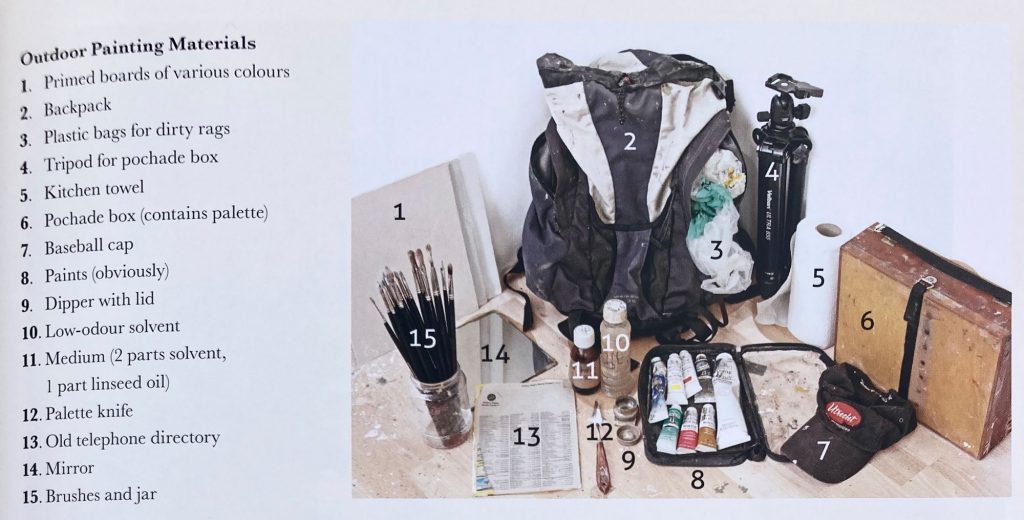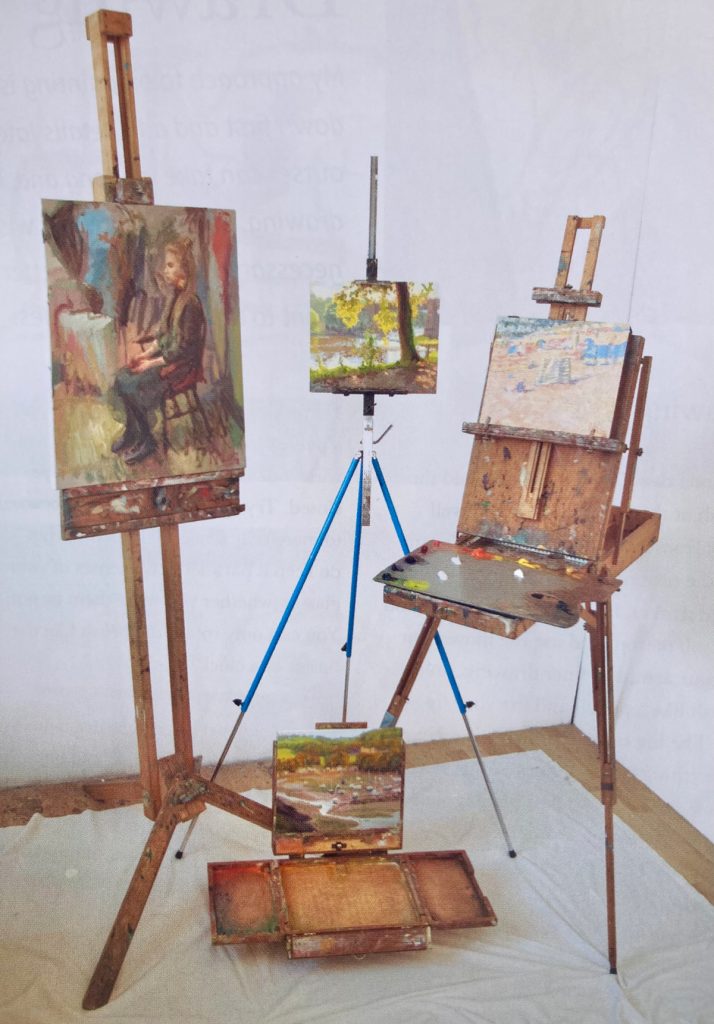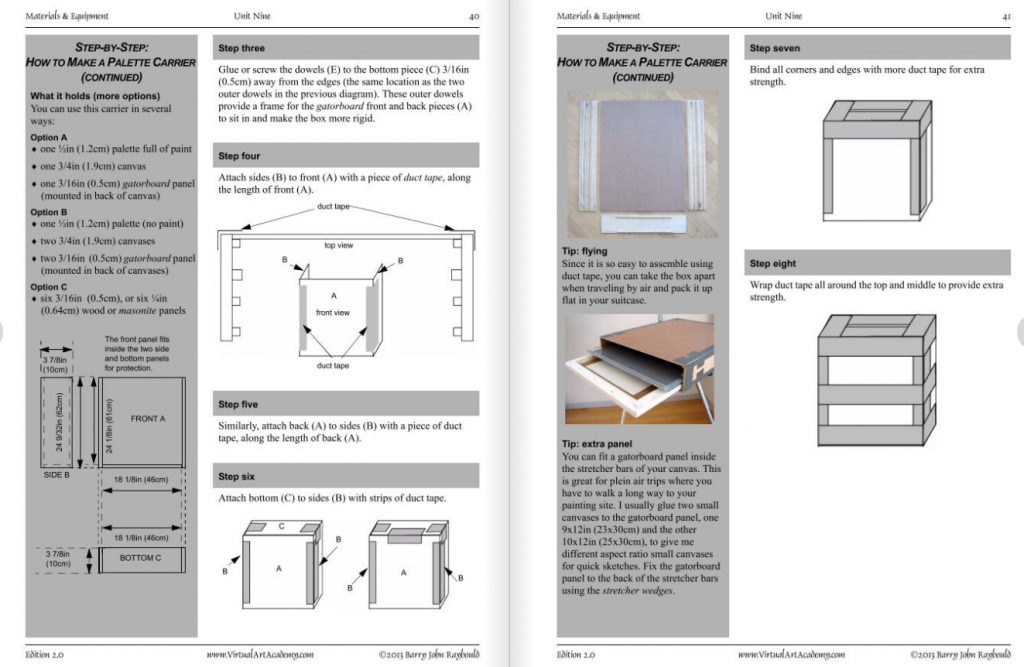A good start is in my book…..


In addition to the above information,
Other optional items include:
Sketchbook and pencil for thumbnail drawings
Camera (or just use your phone)
Viewfinder (or just use your phone)
Old socks for wiping palette
Weight saving
If you have a palette with a lid, you can save weight by applying generous blobs of paint to your palette, enough for the day. Then you only need to carry a tube of white.
The above list shows both solvent AND medium in bottles. You can get away with one or the other. Strictly, you should use solvent for beginning a painting on a new surface. Medium should be used when working over a previously begun (or old) painting. I use so little in my work that I usually just carry medium (2 parts solvent, 1 part linseed oil)
Easels

Field Easel (centre top)
These are very lightweight. The cheap wooden or aluminium ones can be tricky to handle. You can hang a bag over it to weigh it down.
French Easel (right)
The French easel is a real workhorse, as used by Pete Brown and Rob Pointon. They can handle large canvases and have a handy drawer to hold a wet palette. The main drawback is their weight, especially if you put materials in the drawer.
The half-box French easel is a nice compromise. It has a folding palette.
Pochade Box (centre, on floor)
The best pochade boxes are made in the USA. They are quite expensive and also involve shipping charges, but if you get serious about plein air painting, they are properly worth it. You can leave paint on your palette and pack up in seconds, moving onto the next painting site.
Mine is the Alla Prima Pochade , 12 x 10 inches.
Tripod
The tripod is used to hold a pochade box. Mine is the Velbon Ultra 655. It’s a bit heavy, you could probably use a lighter one.
A “ball head” attachment for the tripod is very handy. Manfretto brand are the best. It enables you to quickly remove the box and adjust it to any angle.
Boards
I use white-faced hardboard. If exact accuracy is not important to you, ask your timber merchant to cut them to size.
I “float” frame my paintings, with the edges showing, so it’s imperative that they are cut to size accurately. I get a full 8 x 4 ft sheet from Savoy Timber, cut just once to get it into my car (it will flex). I then cut them to size using a stanley knife.
I prime the BROWN side twice with Acrylic Gesso, brushing in random directions, sanding lightly between coats.
Board Sizes
I only work in 2-inch increments.
The biggest I work on-site is 20 x 16 inches. The smallest is 12 x 6 inches.
You can spend as long on a small one as a big one.
Think of 16 x 12 inches as an average size for maybe a 3-hour painting. You may like to bring along a few different shaped boards to give yourself compositional options.
I have a 18 x 12inch panel carrier for the smaller sizes and a 20 x 16 inch carrier for the larger ones. My pochade box holds up to four 12 x 10s.
Panel carriers
For one-day painting trips by car, you can carry wet paintings on your parcel shelf or in a box in your boot.
There are simple methods for carrying a few wet paintings, such as the
MATCHSTICK METHOD or the MASKING TAPE METHOD
These are demonstrated in Clare Bowen’s helpful video at time stamps 5.55 and 9.45.
If you are going on an extended painting trip where you will need to carry multiple wet paintings, a panel carrier is a good solution. Clare’s video gives a good range of options. Friends who are good at woodwork are useful. My 18 x 12 inch box was made by Brian.

Below is a guide on how to make your own. You can see the instructions properly on the free PDF at…..
https://www.virtualartacademy.com/wet-panel-carrier/


